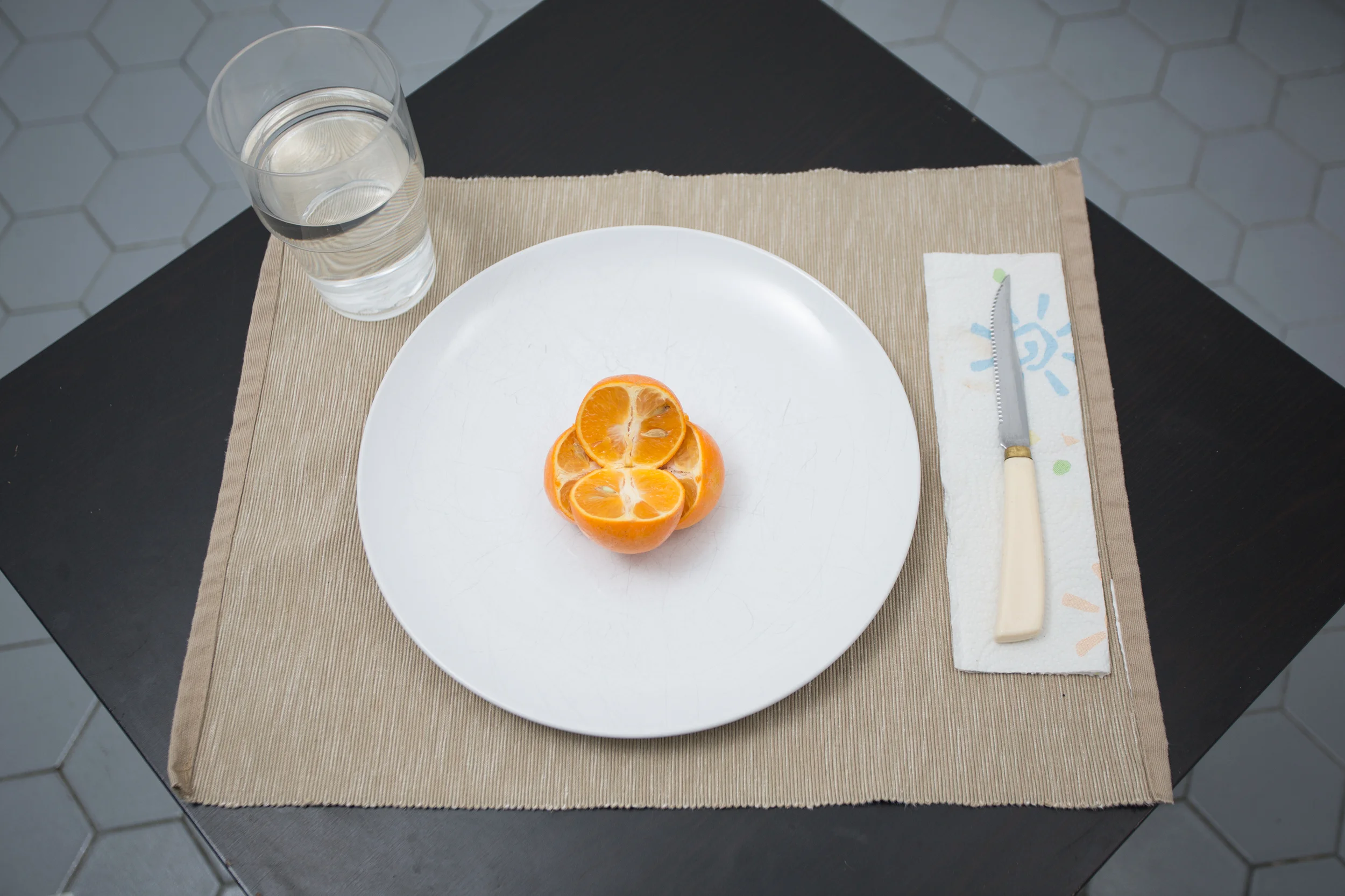Food insecurity is affects one in seven households in the US. The Supplemental Nutrition Assistance Program (SNAP) offers some relief to those struggling, though many who would be considered food insecure do not meet the qualifications required to receive the benefits. SNAP eligibility is based almost exclusively on income. The program offers a maximum of $194 a month to individuals making less than $981 net monthly income. This essentially means that the government believes a single individual should be able feed themself with a budget of around $50 a week, or $7 a day.
The culture around food in mainstream society today consists heavily of eating out and results in an inundation of images of meals being taken and uploaded to Instagram for visual consumption by followers. I felt there was a lack in a visual dialogue of what it means to be hungry (or not) on a “food stamps budget,” so I decided to create a calendar of cheap meals for a week and document everything I ate. My initial goal, or bias you could say, was to make the budget work in a manner that would provide adequate nutrition, while keeping meals as varied as possible. I did not go about this shopping trip having balanced protein, fat, vitamins, etc. because I knew that most people do not or cannot spend the time to do so. I simply walked into Trader Joe’s and bought what caught my eye, being cautious to not go over budget.
The meals that resulted from the trip reflected my eating patterns. Some meals were rushed, consisting of pick-me-ups like trail mix or frozen dumplings and tamales, acknowledging that time is not always an available ingredient. What did not surprise me was the fact that my home cooked meals were both cheaper and more sustaining, but required an hour of my day to prepare. The arrangement of the general composition revolved around a similar blend of rushed and time-consuming. I wanted every image to contain a sense that everything was meticulously planned and placed, yet feel simple. The design of the layout was supposed to allude to table settings in fancier restaurants, but display the uneventfulness of eating at home by using a cheap Ikea table every student has owned as the backdrop for the place mat that would frame the meals. A plastic cup and piece of paper towel fill their standard roles on top of the place setting, but ensure that the scene will not be confused with luxury.
I opted for symmetry, creating triangles with the intersection of lines from the place mat, table and tile floor behind, representing the supposed societal “3 meal” norm. The staticness of the images is meant to display the meals in a consistent monotonous fashion, broken only by the variety of food and utensils required to consume it. The plastic glass filled with water is meant to balance the image visually, but also ground the conversation in what most people on the budget would likely have as their sole option for a mealtime beverage. Having only been filled at the start of the week, the glass acts as a temporal device as the water evaporates day by day. This allows the images to be seen as a progression and not a static series despite their adherence to nearly identical composition otherwise.
Some shortcomings of the series are the constructed nature of the images, they are meant to be visually pleasing as well as informative, but I feel their informative nature is hindered by the fact that I was documenting what the meal was rather that how much I had actually prepared. I decided to play off of delicate arrangements that showed a single serving and not the whole pot, so in many ways, the discussion of quantity of food consumed on the budget is a bit muddled. However, I felt the images as a whole managed to show repeated meals as well as a decent variety, proving that a food stamps diet does not have to be just rice and beans. I do have to admit that my privilege of getting fairly cheap groceries at Trader Joe’s is not something that would be available for most. Those stores tend to center around affluent white communities, while many communities with a high proportion of SNAP recipients have relatively few shopping options that are markedly more expensive. My main hope though was simply to start a conversation and represent what could be possible. Letting the viewer decide what is problematic without blatantly stating it is the most important part, for it allows them to come to conclusions that result in greater acknowledgement of the issue at hand.





















